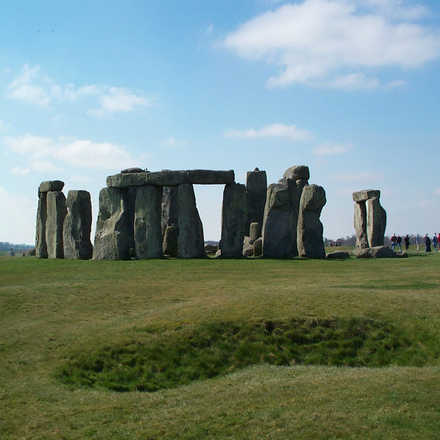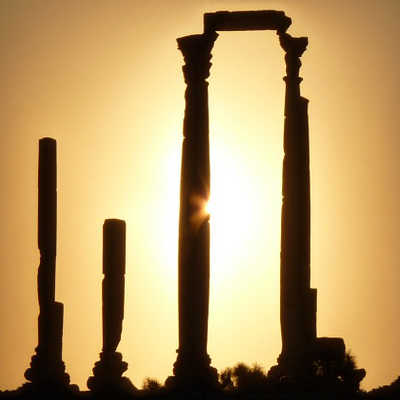Political pressure to remove content on the increase
Google has said that it is alarmed by the increasing demands of western governments for certain ‘political’ content to be taken off the internet.
 The company has admitted that it always receives politically motivated requests to remove content but it said that the number now emanating from Europe was growing. It indicated that this was ‘troubling’ and an attack on free speech.
The company has admitted that it always receives politically motivated requests to remove content but it said that the number now emanating from Europe was growing. It indicated that this was ‘troubling’ and an attack on free speech.
It singled out Spain whose Data Protection Authority applied 14 times to remove 270 searches in the last six months of 2011 as one of the main players. The requests centred on links to blogs and sites concerning public figures.
What Google is concerned about is the countries involved.
A spokesperson for the company said, ’Free expression is at risk here and we are concerned that some of the requests are coming from countries you would not expect – Western democracies’.
The Spanish authority also requested a number of YOUTUBE videos be removed.
Copyright © 2012, DPNLIVE – All Rights Reserved
Vista System’s pylons installed in office building in Vienna
Vista System International, a leading supplier of Modular Curved Frame Technology (MCFT), has recently supplied its innovative illuminated double-sided pylons to the Viennese design company Ritschi Design. The pylons formed part of a high profile directory sign installed outside an office building in Vienna, which hosts some of Austria’s leading firms.
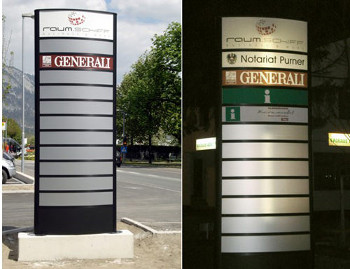 Vista System's Illuminated Double Sided Pylons and Vista System's Illuminated Double Sided Pylons
Vista System's Illuminated Double Sided Pylons and Vista System's Illuminated Double Sided Pylons
A spokesperson for the Wicklow-based Vista said that "Raum Schiff - Business and More" who owns the building, required elegant, durable and flexible illuminated directory pylons to display the names of the companies operating within its building. The sign had to be easily updatable so that new company names could be added to the directory with ease. A further requirement was that it had to be durable to withstand the outdoor environment.
Vista System's illuminated pylons were chosen because they met all the criteria. In particular, it was their ease of updating, high quality design and the fact that they can accept many types of durable graphic inserts that can withstand the outdoor environment which won out in the end.
The company has a distribution centre based in Arklow, Co Wicklow.
For further information:
Tel: Vista sign System Ireland. Phone: 00353 (0) 40 224505
E-mail: This email address is being protected from spambots. You need JavaScript enabled to view it." mce_' + path + '\'' + prefix + ':' + addy79478 + '\'>'+addy_text79478+'<\/a>';
//-->
http://www.vistasystem.com/Ir-home.html
Copyright © 2012, DPNLIVE – All Rights Reserved
In the same year that the UK is celebrating the Queen’s Diamond Jubilee, a long standing Hybrid customer, Bex Design, celebrates its own Silver anniversary. To commemorate reaching this milestone, Ian Board, managing director, and his colleague, Mel Rowden, have decided to walk all the way from a small village near their office to Hyde Park Corner in London, in aid of Wiltshire Air Ambulance.
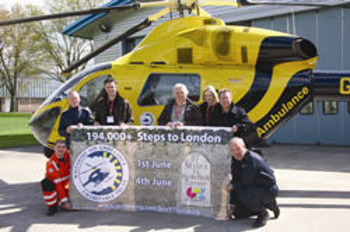 Ian-Board-and-Mel-Rowden-with-the-Wiltshire-Air-Ambulance-1The company – which combines a mix of high end digital kit, with a tradition of screen print production and cutting technology – produces printed membrane switch, graphic overlays, signage displays and self adhesive labels as well as a huge range of other products on an almost limitless array of substrates. Setting off on June 1st from the picturesque village of Yatton Keynell in Wiltshire, about 12 miles northwest of the company’s offices; the intrepid duo plans to arrive at Hyde Park on Monday June 4th. While Ian and Mel are walking the 97 miles to commemorate the company’s anniversary they’re also seeking to raise valuable funds for this excellent cause.
Ian-Board-and-Mel-Rowden-with-the-Wiltshire-Air-Ambulance-1The company – which combines a mix of high end digital kit, with a tradition of screen print production and cutting technology – produces printed membrane switch, graphic overlays, signage displays and self adhesive labels as well as a huge range of other products on an almost limitless array of substrates. Setting off on June 1st from the picturesque village of Yatton Keynell in Wiltshire, about 12 miles northwest of the company’s offices; the intrepid duo plans to arrive at Hyde Park on Monday June 4th. While Ian and Mel are walking the 97 miles to commemorate the company’s anniversary they’re also seeking to raise valuable funds for this excellent cause.
The Wiltshire Air Ambulance charity provides an essential and often life saving service 24 hours a day, seven days a week, 52 weeks a year. It relies solely on charitable donations and according to Ian Board: “We couldn’t think of a more worthwhile and local cause. All of the monies raised from the 97-mile challenge will be donated to Wiltshire air ambulance trust.”
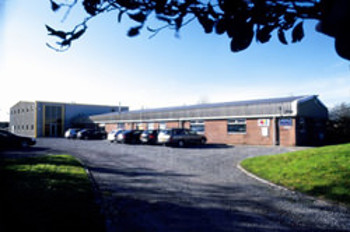 Bex-Design’s-premises-in-WiltshireBoard came up with the idea on a family day out, when he stumbled over an ancient mile marker confirming the distance of 97 miles to Hyde Park, thus sowing the seeds for the challenge. Backing Bex Design and its cause, Hybrid’s marketing manager, Duncan Jefferies, wished the two resolute walkers well. “Ian and Mel have a huge challenge ahead of them. We’re delighted to sponsor them for the walk and wish them the very best of effort.”
Bex-Design’s-premises-in-WiltshireBoard came up with the idea on a family day out, when he stumbled over an ancient mile marker confirming the distance of 97 miles to Hyde Park, thus sowing the seeds for the challenge. Backing Bex Design and its cause, Hybrid’s marketing manager, Duncan Jefferies, wished the two resolute walkers well. “Ian and Mel have a huge challenge ahead of them. We’re delighted to sponsor them for the walk and wish them the very best of effort.”
Anyone wishing to support Bex with their sponsorship efforts for this truly worthwhile cause can visit www.justgiving.com/bex97milewalk
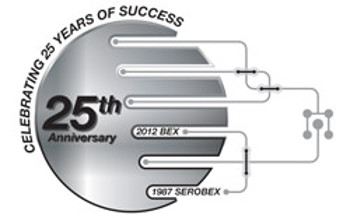 Celebrating-Bex-Design’s-Silver-anniversary
Celebrating-Bex-Design’s-Silver-anniversary
Copyright © 2012, DPNLIVE – All Rights Reserved
Highcon and Staples Printing Systems Division have announced a multi country distribution deal whereby Staples will market and service Highcon’s Euclid dye-cutting machine in a number of European countries including Italy, Spain, Belgium, The Netherlands and Greece.
 Highcon logoIn addition, Staples have purchased a Euclid machine, to be installed in their demonstration suite in Brussels in early November.
Highcon logoIn addition, Staples have purchased a Euclid machine, to be installed in their demonstration suite in Brussels in early November.
The Staples printing division are recognised in the folding carton sector with the subsidiary companies well known for their Heidelberg representation. In addition, the Staples group represents a number of high-profile companies including Kodak, 3M, HP, Adobe, Agfa and Canon.
Wouter Van Dijk, President of the Staples Printing Division in Europe commented, ‘Highcon’s digital strategy fits perfectly with our own and that of many of our customers. The requirement for fast turnaround and short run cartons is growing and the Euclid is a unique solution.’
The Staples subsidiary companies include Macchingraf in Italy, Tetterode in The Netherlands, Plantin in Belgium, Hartmann in Spain and BTI-Hellas in Greece.
Nigel Tracey, International Sales Director of Highcon said, ‘We are impressed not only with Staples’ expertise in the folding carton sector, but also their commitment to customer support. We are delighted to be working together.’
The group companies are taking orders at drupa 2012 and, in conjunction with Highcon, a number of machines will be delivered to Staples customers in Q4 2012.
Copyright © 2012, DPNLIVE – All Rights Reserved
Highcon’s new Direct-to-Pack solution for folding cartons can complement the Xerox® Automated Packaging Solution which includes the Epic CTi-635 In-Line Coating System and Stora Enso Gallop™ Buffering Stacker Line and DC58 Die Cutter. This digital folding-carton cutting and creasing solution offers efficiencies to converters looking to extend digital technology into the finishing process. The Israeli-based company was delighted to have worked together with Xerox Corporation to perform digital cutting and creasing on folding carton packages printed on the Xerox iGen4™.
 Highcon logoPowered by Highcon’s patent-pending Digital Adhesive Rule Technology (DART) the Highcon Euclid uses precision laser optics and polymer technologies to transform cutting and creasing from an analogue to a digital workflow. The result, says Highcon, is a dramatic streamlining of the finishing process which offers brand owners and converters faster and more responsive delivery, increased versioning, shorter run lengths and more creative designs.
Highcon logoPowered by Highcon’s patent-pending Digital Adhesive Rule Technology (DART) the Highcon Euclid uses precision laser optics and polymer technologies to transform cutting and creasing from an analogue to a digital workflow. The result, says Highcon, is a dramatic streamlining of the finishing process which offers brand owners and converters faster and more responsive delivery, increased versioning, shorter run lengths and more creative designs.
“We are convinced that the Highcon Direct-to-Pack solution will be a game-changer for the folding carton package printers,” said Chris Baker, vice president of sales and business development, Highcon. “The synergy between the two companies and their solutions is immediate.”
 Xerox iGEN4 and automated packaging solution 2Folding carton samples that prove the design flexibility and creativity required by today’s market will be shown at the companies’ respective booths at May’s drupa show in Dusseldorf, Germany.
Xerox iGEN4 and automated packaging solution 2Folding carton samples that prove the design flexibility and creativity required by today’s market will be shown at the companies’ respective booths at May’s drupa show in Dusseldorf, Germany.
Highcon booth: Hall 4, B28
Xerox booth: Hall 8B.
http://www.xerox.com/digital-printing/packaging-printing/enus.html
Highcon Direct-to-Pack solution
{youtube}Y-YccBxj9ek|450|338|1{/youtube}
Copyright © 2012, DPNLIVE – All Rights Reserved
Ties that bind The Congo to Ireland - Part 2
Written by Dr Jean-Pierre Eyanga Ekumeloko
Chief Executive Officer
GEE Consulting
 The Democratic Republic of the Congo (DRC) is probably the African country with the strongest historical links with Ireland. There are mainly two I would like to talk about.
The Democratic Republic of the Congo (DRC) is probably the African country with the strongest historical links with Ireland. There are mainly two I would like to talk about.
In the first part of this article, we said that the first link had to do with Roger Casement who worked there. The second concerns the first major overseas deployment of Irish troops sent to the Congo in 1960 as part of the United Nations force ONUC.
It must be noted that in March 1961, another Irishmen, Dr Conor Cruise O’Brien, who was then attached to the Department of External Affairs in Dublin, was appointed as the UN’s special representative to Katanga. He resigned his post in December 1961.
From a politico-diplomatic point of view, this operation was considered the first armed overseas mission since the foundation of the Irish state in 1922 and represented an important milestone in Ireland’s foreign policy. Ireland, previously, twice sent troops as unarmed observers - to Lebanon in June 1958 attached to UNOGIL, the UN Observer Group in Lebanon, and in December 1958 with UNTSO, the UN Truce Supervision Organisation. But the Congo mission was far different, since the troops were armed; they had to operate on a huge territory and in very difficult circumstances.
In fact, only twelve days after securing its independence on 30 June 1960, the new Republic requested military assistance from the UN to maintain its territorial integrity which was under a real threat of civil war with the mineral-rich province of Katanga declaring independence on 11 July 1960. For that reason, the 32nd Infantry Battalion, under the leadership of Colonel Mortimer Buckley, was sent there in July 1960 to carry out a peace-keeping mission. According to the UN, over 6000 Irish people served in the Congo between 1960 and 1964. It is now clear that the field realities transformed the mission into a peace-making operation.
All keen observers and historians agree that it was a very costly mission for the Irish troops with the loss of at least 26 soldiers. The sadly famous Niemba Ambush in Katanga claimed 9 lives, the greatest loss of life for the Irish army in a single incident.
Even though one can say now that they were ill-equipped, inexperienced and unprepared for the catastrophic battles they would face, many reports praise the tremendous courage, “professionalism” and resistance displayed by the Irishmen in different hot spot occasions. One of these is known as the Siege of Jadotville where 150 lightly armed and equipped Irish soldiers successfully confronted more than 4,000 Katanga troops for six days, without any fatal casualty on their side. The Katanga troops were supported by a jet and backed by mercenaries from various countries such as Belgium, Rhodesia and France. Outnumbered, the Irish company was eventually forced to surrender after ammunition and supplies were exhausted, and soldiers were held prisoners for almost a month. However, the enemy suffered heavy losses.
Today I would agree with the view that despite the widespread unrest in the Congo in the early 1960s, the UN Irish troops’ contribution helped to prevent the death toll from rising further. They also helped to bring an end to the secession of Katanga in January 1963.
This is something that the Congolese people cannot and will not forget: Ireland contributed to the country’s peace and unity recovery, even if, following the withdrawal of UN forces, the internal and the external struggle for control of the giant country continued. Still now, multinational mining conglomerates and financial trusts are working hard to keep the country in a relatively “unstable stability” in order to keep on exploiting unscrupulously its wealth. But Irish people shed their blood for the good of the Congolese people who will always say: “Thank you, Ireland”.
From these links between Ireland and the Congo, I can unmistakably conclude that the two countries met at very important moments of their history, fashioning strong and indelible ties that people of both countries won’t ever forget. These links should be built on to develop healthy and robust political, economic, social and cultural relationships fully justified by this shared history which needs to be respected and valued the way it deserves.
References:
- http://en.wikipedia.org/wiki/Irish_Army
- http://en.wikipedia.org/wiki/Siege_of_Jadotville
- David O’Donoghue, Army’s Congo Mission Casts a Long Shadow, Irish Studies in International Affairs, Vol. 17 (2006), 43–59.
Copyright © 2012, DPNLIVE – All Rights Reserved
Dr Jean-Pierre Eyanga Ekumeloko,
an Irish citizen and businessman living in Dublin,
and originally from the Democratic Republic of Congo.
www.gee-consulting.com
Feb 2012
 La République Démocratique du Congo (RDC) est probablement le pays africain avec lequel l’Irlande a les plus forts liens historiques. Il y en a principalement deux dont je voudrais parler.
La République Démocratique du Congo (RDC) est probablement le pays africain avec lequel l’Irlande a les plus forts liens historiques. Il y en a principalement deux dont je voudrais parler.
La première est liée à Roger Casement qui y travailla. Je me souviens avoir entendu son nom pour la première fois en 1973, quand j'étais en 5ème année au Collège Boboto, à Kinshasa, capitale de ce grand pays de 2.345.000 km² en Afrique Centrale.
Je sais que les Congolais sont très reconnaissants à Roger Casement. Pour comprendre cela, nous devons revisiter l'histoire du Congo. En 1876, en raison de son désir de gloire, le Roi Léopold II de Belgique avait fondé l’International African Society, une entreprise « civilisatrice » pour l'Afrique. Après avoir également créé l’International Congo Society en 1878, avec une vision plus impérialiste, il envoya Henry Morton Stanley au Congo pour la deuxième fois de 1879 à 1885 pour préparer la formation de l'Etat du Congo. Malheureusement, le gouvernement français s'opposa à ses plans.
Ainsi, en 1884-85, la Conférence de Berlin fut appelée par le Portugal, mais organisée par Bismarck, le premier Chancelier Allemand, afin de réunir les représentants des pays les plus puissants du monde occidental, y compris l'Autriche-Hongrie, la Belgique, le Danemark, la France, le Royaume-Uni, l'Italie, les Pays-Bas, le Portugal, la Russie, l’Espagne, la Suède-Norvège (union jusqu'en 1905), l'Empire Ottoman et les États-Unis. Le but de la réunion était clair: planifier la ruée vers l'Afrique, réglementer la colonisation et élaborer des règles pour le commerce dans le continent.
L’un des principaux résultats de la conférence fut que l'État Libre du Congo devint essentiellement la propriété de Léopold II. Celui-ci exploita ses ressources naturelles - en particulier le caoutchouc et l'ivoire - exactement comme un homme d'affaires cupide et sans scrupules. Bien que leur résistance fût acharnée, les Congolais furent soumis, par des collaborateurs du Roi Léopold II, à des violations massives, dures et cruelles des droits humains.
En 1900, une campagne de dénonciation dirigée par E.D. Morel et de nombreux autres Réformistes eut lieu en Europe et en Amérique. Quand la Reine Victoria, la cousine du Roi Léopold II, fut décédée, une décision fut prise quant à la conduite à suivre dans le traitement du Congo. En 1903, la Chambre des Communes ordonna à Roger Casement, un Irlandais qui travaillait comme Consul Britannique à Boma, d’enquêter sur les accusations de violations des droits de l'homme dans l'État Libre du Congo. Son rapport, long et bien détaillé, fut un véritable témoignage qui mit en lumière tous les abus perpétrés par les hommes du Roi. Le Rapport Casement fut délivré en 1904.
En fait, il contenait 40 pages de documents parlementaires et 20 autres pages de déclarations individuelles que Mr Casement avait compilées. Il y avait de nombreux récits de razzias, de meurtres, de mutilations, d'enlèvements et de passages à tabac cruels de la population autochtone par des soldats de l'administration du Roi Léopold au Congo. Le gouvernement britannique envoya des copies au gouvernement belge et à tous les signataires de l'Accord de Berlin de 1885. Le Rapport Casement fut ensuite confirmé dans ses moindres détails par un autre rapport écrit venant d'une enquête indépendante mise en place par le gouvernement belge.
Selon William Roger Louis, un éminent historien à l'Université du Texas à Austin, "Casement rassembla des preuves qui permirent au gouvernement britannique d'attaquer l'Etat du Congo en raison de la mauvaise administration [...] Convaincus que seule une croisade humanitaire pouvait abolir les maux du régime de Léopold II, Casement inspira E.D. Morel de fonder le Congo Reform Association. Grâce à sa double qualité de fonctionnaire et d’humanitaire, il tenta, selon ses propres mots, à étouffer le roi Léopold « comme un « chien d’enfer» est étouffé".
Au Congo, les historiens et autres intellectuels sont convaincus que le Rapport Casement fut le facteur-clé pour persuader Léopold II de finalement renoncer à ses biens personnels en Afrique et pour l'annexion de la Belgique du Congo comme une colonie en 1908. Même s'il s'agit d'un transfert du territoire d'une entité à une autre, passant d'une entreprise d’exploitation sanglante totalement motivée par le gain à une colonisation d'exploitation, ce développement soulagea les Congolais d'un système complètement maléfique. Et ils ne l'oublieront jamais.
Hannah Arendt, un théoricien politique germano-américain, pense qu'il y eut une perte minimale de la population estimée à 11,5 millions. Isidore Ndaywel à ¨ Nziem, un chercheur Congolais de renom, avance le chiffre de près de 13 millions. Certains historiens estiment que, sans doute, ce qui s'est passé au Congo a été l'une des grandes catastrophes des temps modernes.
Cela se passa il y a environ 100 ans. Il est étrange qu’aujourd'hui, 50 ans après acquis son indépendance, le Congo se heurte encore à peu près les mêmes fantômes. Pour les gouvernements britannique et irlandais, et les militants des droits humains, le défi est leur devoir de garder vivantes et intactes en RDC les actions nobles de leurs ancêtres. Cour Gully et James Lowther, les Présidents de la Chambre des Communes britannique entre 1895 et 1921, n’avaient-ils pas travaille pour voir les Congolais vivre en paix? La Chambre des Communes, le Gouvernement britannique, E.D. Morel et Roger Casement s’étaient-ils vraiment soucié de la population congolaise ou non? Si c'était le cas, personne ne devrait cracher sur leur mémoire, surtout maintenant que la RDC est trahie et utilisée comme une proie.
Références:
- http://hcmilkowski.wordpress.com/2010/02/10/why-should-you-know-about-the-casement-report/
- http://journals.cambridge.org/action/displayAbstract;jsessionid=F5DFC388C5BF7A214A4FCD8F6C1266F2.journals?fromPage=online&aid=27797
- http://en.wikipedia.org/wiki/Roger_Casement
- http://en.wikipedia.org/wiki/E._D._Morel
- http://en.wikipedia.org/wiki/Berlin_Conference_%281884%29
- http://www.enotes.com/king-leopold-ii-congo-reference/king-leopold-ii-congo
Tous Droits Réservés
Copyright © 2011, DPNLIVE – All Rights Reserved
{jcomments on}
Written by Dr Jean-Pierre Eyanga Ekumeloko,
an Irish citizen and businessman living in Dublin,
and originally from the Democratic Republic of Congo.
www.gee-consulting.com
Feb 2012
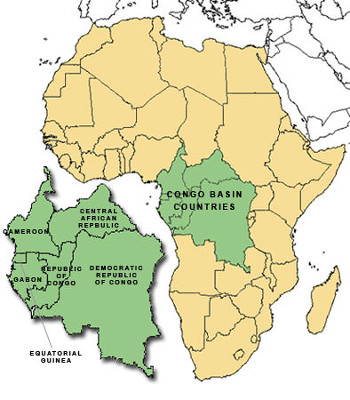 The Democratic Republic of the Congo (DRC) is probably the African country with the strongest historical links with Ireland. There are mainly two I would like to talk about.
The Democratic Republic of the Congo (DRC) is probably the African country with the strongest historical links with Ireland. There are mainly two I would like to talk about.
The first has to do with Roger Casement who worked there. I remember hearing his name for the first time in 1973, when I was in 5th Year in a secondary school, Boboto College, in Kinshasa, capital city of this large country of 2,345,000 sq k in Central Africa.
I know that Congolese people are very grateful to Roger Casement. To understand this we need to revisit the history of Congo. In 1876, because of his desire for glory, King Leopold II of Belgium founded the International African Society, a “civilizing” enterprise for Africa. After also creating the International Congo Society in 1878, with a more imperialist vision, he sent Henry Morton Stanley to Congo for the second time from 1879 to 1885 to prepare for the formation of the Congo Free State. Unfortunately, the French Government objected to his plans.
Thus, in 1884-85, the Berlin Conference was called for by Portugal but organised by Bismarck, the first German Chancellor, to gather the representatives of the most powerful western countries, including Austria–Hungary, Belgium, Denmark, France, the UK, Italy, the Netherlands, Portugal, Russia, Spain, Sweden-Norway (union until 1905), the Ottoman Empire, and the US. The meeting’s aim was clear: to plan the scramble for Africa, regulate colonisation and devise rules for trade in the continent.
A key outcome of the meeting was that the Free State of the Congo was made essentially the property of Leopold II. He exploited its natural resources – especially rubber and ivory – exactly like a greedy and unscrupulous businessman. Although their resistance was fierce, the Congolese people were submitted by Leopold’s collaborators to massive, harsh and cruel human rights abuses.
In 1900, a denunciation campaign run by ED Morel and many other Reformists took place in Europe and in America. When King Leopold II’s cousin Queen Victoria died, a decision had to be made about how to continue treating the Congo. In 1903, the House of Commons commissioned Roger Casement, an Irishman working as British Consul at Boma, to investigate the accusations of human rights abuses in the Congo Free State. His long and well-detailed report was a real testimony which exposed all the abuses carried out by the King’s people. The Casement report was delivered in 1904.
In fact, it contained 40 pages of parliamentary papers and 20 other pages of individual statements that Mr Casement compiled. There were many accounts of razzias, killings, mutilation, kidnapping and cruel beatings of the native population by soldiers of the Congo administration of King Leopold. The British government sent copies to the Belgian government and all the signatories to the Berlin Agreement in 1885. The Casement report was confirmed in every detail by another report written through an independent inquiry set up by the Belgian government.
According to William Roger Louis, a distinguished historian at the University of Texas at Austin: “Casement gathered evidence that enabled the British government to attack the Congo State on grounds of maladministration.[…] Convinced that only a humanitarian crusade could abolish the evils of the Leopoldian regime, Casement inspired ED Morel to found the Congo Reform Association. Through his dual capacity of civil servant and humanitarian, he attempted, in his own words, to choke off King Leopold ‘as a “helldog” is choked off’.”
In Congo, historians and other intellectuals are convinced that Casement’s report was key to persuading Leopold to finally relinquish his personal holdings in Africa and Belgium’s annexation of the Congo as a colony in 1908. Even though it was a transfer of the territory from one entity to another, moving from a totally business-led bloody exploitation to an exploitation colonisation, this development released the Congolese from a completely evil system. And they will never forget it.
Hannah Arendt, a German American political theorist, thinks there was an estimated minimum population loss of 11.5 million. Isidore Ndaywel è Nziem, a Congolese scholar, puts the figure at roughly 13 million. Some historians consider that, without doubt, what happened in the Congo was one of the great catastrophes of modern times.
This happened almost 100 years ago. It is bizarre that today, 50 years after securing independence, Congo still faces almost the same ghosts. For the British and Irish governments and human rights activists, the challenge is their duty to keep the noble actions of their ancestors in DRC alive and unspoiled. Didn’t Court Gully and James Lowther, speakers in the UK House of Commons between 1895 and 1921, work to see Congolese people live peacefully? Did the House of Commons, British Government, ED Morel and Roger Casement really care about the Congolese people or not? If they did, nobody should spit on their memory, especially now that DRC is being betrayed and used as prey.
References:
- http://hcmilkowski.wordpress.com/2010/02/10/why-should-you-know-about-the-casement-report/
- http://journals.cambridge.org/action/displayAbstract;jsessionid=F5DFC388C5BF7A214A4FCD8F6C1266F2.journals?fromPage=online&aid=27797
- http://en.wikipedia.org/wiki/Roger_Casement
- http://en.wikipedia.org/wiki/E._D._Morel
- http://en.wikipedia.org/wiki/Berlin_Conference_%281884%29
- http://www.enotes.com/king-leopold-ii-congo-reference/king-leopold-ii-congo
Copyright © 2011, DPNLIVE – All Rights Reserved
{jcomments on}
How a failure in government led created a tragedy.
By Daniel J. Steiger
 Flint Water Plant
Flint Water Plant
“I’ve got your back.” That’s what President Obama told community members gathered at a local high school in Flint Michigan, USA. His visit to the city was in response to a letter written by 8 year old Mari Copeny who expressed an interest to meet with the president to discuss the problems with her city’s water supply.




